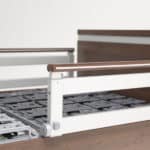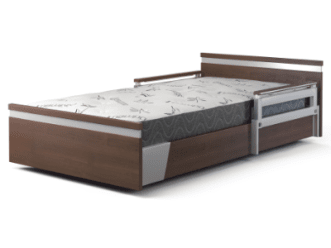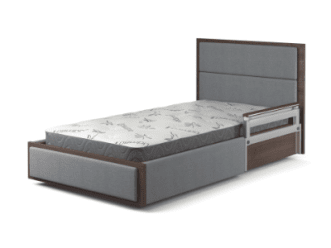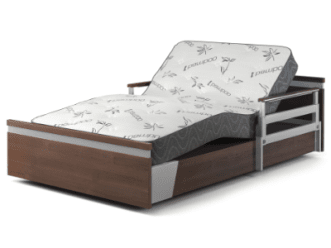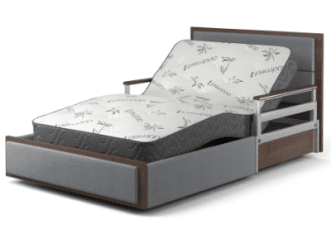A hospital bed is a specially designed bed used in hospitals or other health care facilities to accommodate patients who require medical care. These beds are equipped with various features to ensure the comfort and safety of patients and to assist health care providers in delivering care. Common features of hospital beds include adjustable height, adjustable head and foot sections, side rails, and electronic controls for bed adjustments and other nearby electronic devices.
Hospital beds are not only used in hospitals but also in other health care settings such as nursing homes, assisted living facilities, outpatient clinics, and even in home health care environments. The term "hospital bed" can refer to the physical bed itself, but it is also used more broadly to describe the capacity of a health care facility, as the number of available "beds" indicates how many patients the facility can accommodate.
The history of hospital beds dates back to between 1815 and 1825 when beds with adjustable side rails first appeared in Britain. In 1874, Andrew Wuest and Son, a mattress company in Cincinnati, Ohio, patented a mattress frame with a hinged head that could be elevated, a precursor to the modern hospital bed. The modern three-segment adjustable hospital bed was invented by Willis Dew Gatch, chair of the Department of Surgery at the Indiana University School of Medicine, in the early 20th century. This type of bed is sometimes referred to as the "Gatch Bed." The modern push-button hospital bed was introduced in 1945 and originally included a built-in toilet to eliminate the need for a bedpan.
Specialist hospital beds are designed to treat specific injuries and conditions. Examples include standing beds, turning beds, and legacy beds, which are used for treating back and spinal injuries as well as severe trauma. Some advanced beds are equipped with columns that allow the bed to tilt 15–30 degrees on each side, helping to prevent pressure ulcers and aiding caregivers in their tasks.
Hospital beds are typically equipped with wheels to facilitate easy movement within the facility or room. These wheels are lockable for safety during patient transfers. However, hospital beds can be costly, with prices varying based on manual functions, motorized adjustments, and additional features such as bariatric models that offer extra width.
Despite their benefits, hospital beds can pose certain risks. For instance, they can cause a patient's spine to become more rounded if the patient frequently sits up and slides down the bed. Some manufacturers have addressed this issue by incorporating anti-slip features. Additionally, patient safety has been a concern, with incidents reported in the 1980s where children were injured or killed by mechanical hospital beds.
In summary, hospital beds are essential tools in health care settings, designed to provide comfort and support to patients while facilitating care delivery by health care providers. Their design and features have evolved significantly over time to enhance patient safety and care efficiency.
Citations:
[1] https://www.collinsdictionary.com/us/dictionary/english/hospital-bed
[2] https://www.lawinsider.com/dictionary/hospital-bed
[3] https://www.ahd.com/definitions/statistics.html
[4] https://en.wikipedia.org/wiki/Hospital_bed
[5] https://www.michigan.gov/-/media/Project/Websites/mdhhs/Folder1/Folder64/HB_Standards.pdf?rev=532ff01169ca4eb8bb9153f3ed6941ee
[6] https://hfsrb.illinois.gov/content/dam/soi/en/web/hfsrb/about/ltcfasc/documents/current-bed-definitions-of-the-state-board.pdf
[7] https://www.sondercare.com/learn/hospital-beds/how-many-types-hospital-beds-are-there/
[8] https://www.ncbi.nlm.nih.gov/pmc/articles/PMC9974230/







